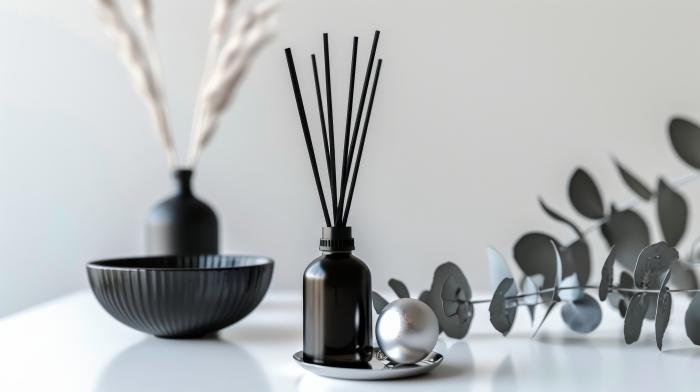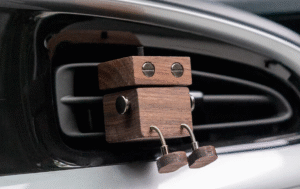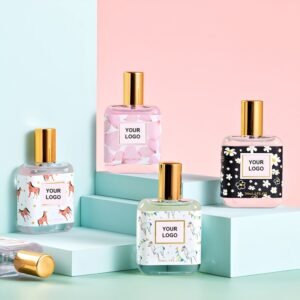Many fragrance entrepreneurs face overwhelming confusion when choosing between OEM and ODM manufacturing models for their private label business.
OEM vs ODM fragrance manufacturing differs significantly in control, costs, and customization options. OEM provides complete design ownership while ODM offers faster market entry with pre-developed formulations, affecting your brand’s positioning and profitability.

Understanding these manufacturing models becomes crucial as the global fragrance market continues expanding rapidly.
What Are the Core Differences Between OEM and ODM in Fragrance Manufacturing?
Many fragrance entrepreneurs struggle to choose the right manufacturing partner. This confusion costs time, money, and market opportunities.
OEM manufacturing means you design while manufacturers produce. ODM manufacturing means manufacturers design and produce while you brand and market. The choice impacts cost, control, and time-to-market significantly.
Manufacturing Control and Design Ownership
In OEM arrangements, you maintain complete control over your fragrance formulation and design specifications. You develop the concept, create the formula, and specify exact requirements while the manufacturer handles production. This original design manufacturing approach gives you full intellectual property rights and allows unlimited customization.
ODM partnerships flip this dynamic entirely. The manufacturer owns pre-developed fragrance formulas and designs. You select from their existing portfolio, make minor modifications, and apply your branding. While this limits customization freedom, it significantly reduces development complexity and accelerates market entry.
Time-to-Market and Cost Considerations
The difference between OEM and ODM becomes most apparent in project timelines and financial requirements. Consider these key contrasts:
| Factor | OEM Contract | ODM Manufacturing |
|---|---|---|
| Development Time | 6-12 months | 2-4 months |
| Initial Investment | $50,000-200,000 | $10,000-50,000 |
| Minimum Orders | 10,000+ units | 1,000+ units |
| IP Control | Full ownership | Limited/shared |
| Customization | Unlimited | Template-based |
OEM requires substantial upfront investment but offers complete brand differentiation. ODM enables faster launches with lower barriers but limits your unique positioning in the fragrance manufacturing landscape. Smart entrepreneurs often start with ODM to test markets, then transition to OEM contract arrangements as their brands mature.
How Do Customization Options Differ Between OEM and ODM Models?
Amazon sellers face confusion when choosing between fragrance manufacturing partnerships. ODM promises convenience but limits brand control.
OEM manufacturing provides complete design ownership and formulation control, while ODM offers pre-designed products with limited customization capabilities, affecting brand differentiation and intellectual property rights.

OEM Customization: Full Creative Control
OEM customization models grant complete design autonomy over fragrance development. You provide detailed specifications for scent profiles, bottle designs, and packaging aesthetics. Loveeno’s OEM services enable brands to create unique formulations from scratch, ensuring exclusive market positioning. This approach requires more initial investment but delivers superior brand differentiation. Manufacturing customization extends to production volumes, allowing flexible order quantities based on market demand.
ODM Customization: Limited Modifications
ODM partnerships offer faster market entry through pre-existing product lines. Original design modifications typically include packaging colors, label designs, and minor scent adjustments. However, core formulations remain standardized across multiple clients. This fragrance customization approach reduces development costs but limits unique selling propositions. ODM manufacturers handle most design decisions, reducing your control over final product characteristics.
| Customization Aspect | OEM Model | ODM Model |
|---|---|---|
| Formula Development | Complete control | Limited modifications |
| Packaging Design | Full customization | Template-based changes |
| Development Time | 3-6 months | 1-2 months |
| IP Ownership | Client owns | Shared/Manufacturer |
| Cost Investment | Higher initial | Lower upfront |
| Market Differentiation | High uniqueness | Moderate uniqueness |
What Are the Investment Requirements and IP Rights for Each Model?
Launching a fragrance brand requires significant financial commitment, yet many entrepreneurs struggle to understand which manufacturing model suits their budget and intellectual property goals.
OEM requires higher minimum order quantities and upfront investment but grants full IP ownership, while ODM offers lower investment barriers with shared IP rights and faster market entry.
Financial Investment Breakdown
OEM manufacturing demands substantial capital investment due to custom formulation development and tooling costs. Brands typically face minimum order quantities of 5,000-10,000 units, requiring initial investments ranging from $50,000 to $200,000 depending on product complexity. Manufacturing costs per unit are generally higher initially but decrease with volume, making OEM ideal for established brands with steady demand.
ODM presents a more accessible entry point with minimum order quantities starting as low as 1,000-3,000 units. Initial investment requirements typically range from $10,000 to $50,000, making it attractive for new fragrance entrepreneurs testing market viability. At Loveeno, we’ve structured our ODM programs to support emerging brands with flexible minimum orders and competitive pricing tiers.
Intellectual Property Rights and Control
| Aspect | OEM Model | ODM Model |
|---|---|---|
| Formula Ownership | Client retains full rights | Shared or manufacturer-owned |
| Design Control | Complete customization freedom | Limited to existing templates |
| Brand Protection | Full IP protection | Restricted exclusivity |
| Market Exclusivity | Guaranteed exclusivity | Potential market overlap |
| Development Time | 6-12 months | 2-4 months |
OEM provides complete intellectual property control, ensuring exclusive ownership of formulations and packaging designs. This model suits brands prioritizing long-term market differentiation and premium positioning. ODM offers faster time-to-market advantages but typically involves shared IP rights, where manufacturers may offer similar formulations to multiple clients with slight variations.
Which Manufacturing Model Should Amazon Sellers and New Brands Choose?
Amazon sellers face a critical decision that could make or break their fragrance brand launch. Choosing the wrong manufacturing model means wasted capital, delayed market entry, and missed opportunities.
The optimal choice between OEM and ODM depends on your brand’s specific needs: OEM offers complete customization control for unique products, while ODM provides faster market entry with pre-designed formulations ready for private labeling.

Understanding Your Business Strategy Priorities
Your manufacturing decision should align with your long-term business strategy. Amazon sellers entering the fragrance market must evaluate their priorities carefully. OEM manufacturing suits brands seeking complete product differentiation and willing to invest in custom development. This approach grants full intellectual property control and allows unique fragrance profiles that stand out in Amazon’s competitive marketplace.
ODM manufacturing serves sellers prioritizing speed and cost efficiency. With pre-developed formulations, brands can launch within weeks rather than months. This model particularly benefits new fragrance entrepreneurs testing market demand before committing to custom development investments.
Cost and Timeline Analysis
The financial implications vary significantly between models. OEM requires substantial upfront investment for formulation development, typically ranging from $10,000-$50,000 for custom fragrances. Development timelines extend 3-6 months before production begins.
| Manufacturing Model | Initial Investment | Development Time | IP Ownership | Customization Level |
|---|---|---|---|---|
| OEM | $10,000-$50,000 | 3-6 months | Full | Complete |
| ODM | $2,000-$8,000 | 2-4 weeks | Limited | Moderate |
| Time to Market | 4-8 months | 1-2 months | N/A | N/A |
ODM significantly reduces both investment and timeline. With existing formulations, brands typically invest $2,000-$8,000 and reach market within 1-2 months. For Amazon sellers testing fragrance categories, ODM’s lower barrier enables rapid market validation. Loveeno’s ODM catalog offers over 200 proven formulations, allowing brands to select winning scents with minimal risk while maintaining quality standards that satisfy Amazon’s demanding customer base.
Conclusion
Choosing between OEM vs ODM fragrance manufacturing ultimately depends on your brand’s priorities, budget, and timeline. OEM offers complete customization control and IP ownership for unique market positioning, while ODM provides faster market entry with lower investment requirements. New fragrance entrepreneurs should consider starting with ODM to validate market demand, then transitioning to OEM as their private label strategy matures and sales volumes justify the higher investment.
FAQ
Q1: What is the main difference between OEM and ODM fragrance manufacturing?
OEM (Original Equipment Manufacturing) involves manufacturing products based on your exact specifications and designs, while ODM (Original Design Manufacturing) uses pre-developed manufacturer designs that can be customized. OEM gives you full control over product development, whereas ODM offers ready-made solutions with limited customization options.
Q2: Can I co-develop products with OEM fragrance manufacturers?
Yes, OEM fragrance manufacturing allows for complete co-development where you work closely with manufacturers to create custom formulations, packaging, and branding. This collaborative approach gives you full IP rights and control over the final product, making it ideal for brands wanting unique, proprietary fragrances.
Q3: What are the minimum order requirements for OEM vs ODM fragrance production?
OEM fragrance manufacturing typically has higher minimum order quantities (MOQs) due to custom development costs, while ODM often has lower MOQs since products use existing formulations. OEM MOQs can range from 1,000-10,000 units depending on complexity, whereas ODM may start as low as 500 units for standard products.
Q4: How does IP protection work in OEM vs ODM fragrance contracts?
In OEM contracts, you retain full intellectual property rights to your custom formulations and designs. With ODM, the manufacturer typically retains some IP rights to the base formulations, limiting your ability to protect the product design. Always review IP clauses carefully in your manufacturing agreement.
Q5: Which is faster for market entry: OEM or ODM fragrance manufacturing?
ODM offers faster time-to-market since products use existing formulations and designs, typically taking 4-8 weeks. OEM requires more development time (8-16 weeks) for custom formulation, testing, and production setup, but results in unique products that better differentiate your brand.




